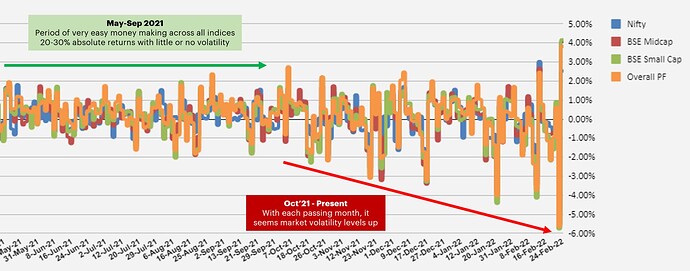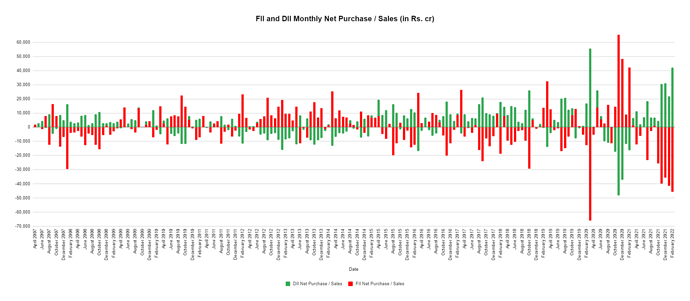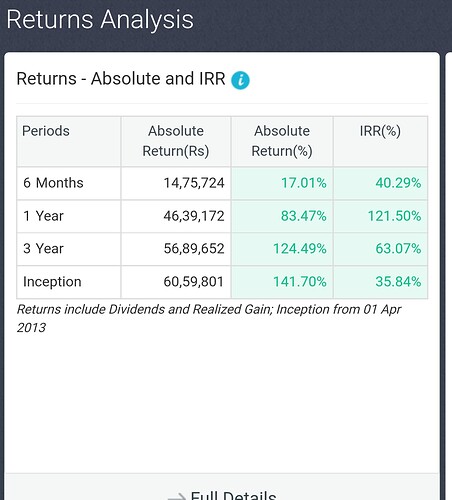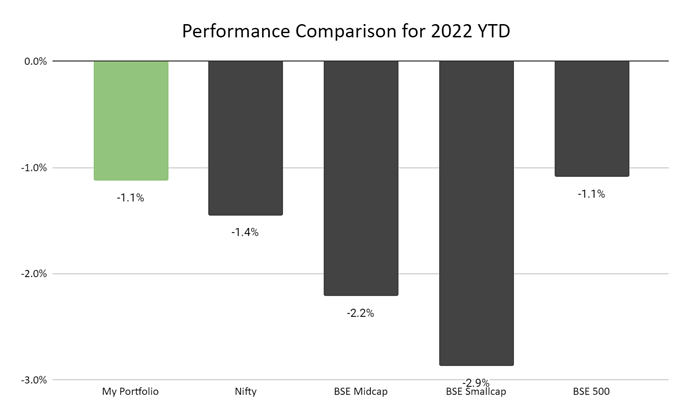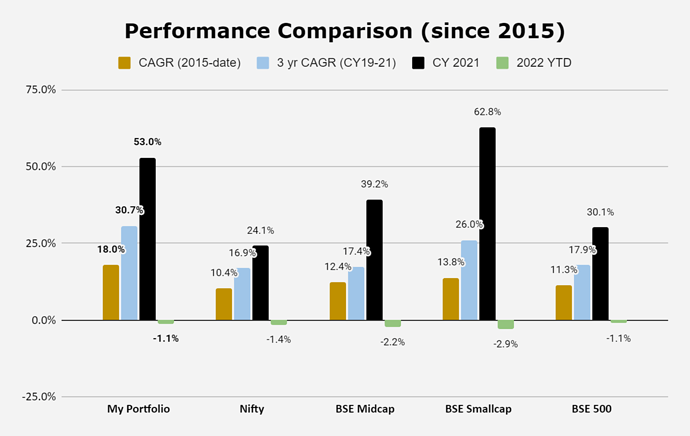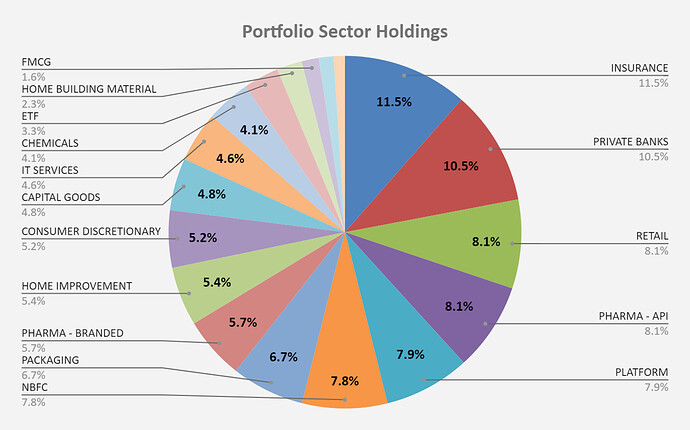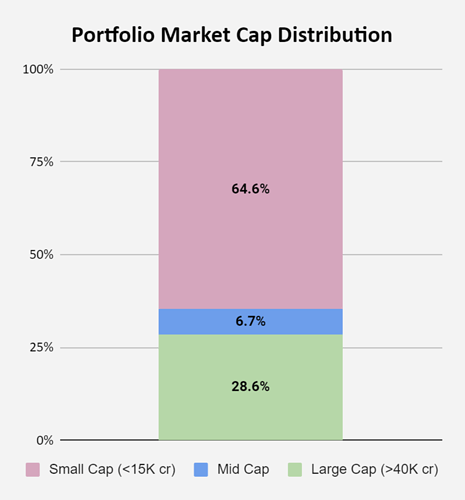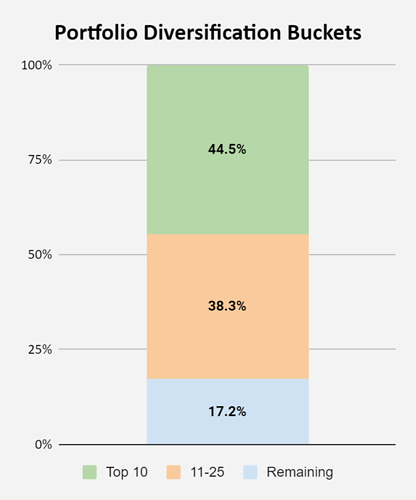Monthly Portfolio Note - March and April 2022
I have been keeping really busy on the work front which prevented me sharing the portfolio update for the month of March. In hindsight, there’s not been much to update as markets have also not done much since then or YTD along with my portfolio.
I must admit I have re-shuffled a lot of positions (constantly adding, trimming, averaging, etc. in and out of similar set of stocks) but the end result is this is a really tough market to generate good returns. I like to stick with secular growth stories, B2C consumption, brands but believe the last 6 months have mainly belonged to a lot of cyclicals and commodities. I’m not sure how long this phase of the market will last, however I’m definitely not one to get into cyclicals and commodities except if I’m following a momentum style of investing which I’m actually testing the waters with currently (more on that in a bit).
So overall, my portfolio has held up pretty well in these 4 months after 2021’s 50%+ returns - I’m quite happy if not ecstatic with the YTD performance because I’ve ~30% of my portfolio in Financial Services (Insurance, Banks, NBFCs) which has been a relative disaster in the bull run of past 2 years. Despite these headwinds, the YTD portfolio performance has remained extremely resilient beating key benchmarks mainly thanks to Beta Drugs, Mirza and some recovery in Neuland, Vaibhav Global and few others. Also my portfolio doesn’t include dividends and some of the companies have announced excellent dividends yielding more than 3-4% just on dividends (HCL Tech, Glenmark Life, etc.)
Portfolio Updates
Entry - HDFC (better to be termed as re-entry after selling at 2600 and re-entering sub 2300), the merger announcement is a win-win situation and the current valuations are extremely comfortable in the context of 16-18%+ merged entity growth compounding machine. Below is a great read on the expected impact and performance of merged entity
https://marcellus.in/newsletter/kings-of-capital/our-view-on-the-hdfc-mega-merger/#
Swaraj Engines - The current year makes me appreciate dividend aristocrats such as Swaraj Engines. I picked this up at a mouth watering 6%+ div yield at Rs1320 with profit compounding of 8-10% over the past decade and company has been consistently doing capex every few years to maintain a steady growth rate. I do not see any major threat of EVs in the tractor space for the next decade. Open to changing stance if the situation changes.
ETFs - 1. Mirae FANG+ ETF - For the first time, I’ve started investing passively in a couple of ETFs. Mirae FANG+ ETF is a fantastic way to play the best of the best quality rapidly growing 18-20%+ US technology businesses without having to invest much effort in comparing or picking the right company (Tesla vs Apple vs Microsoft vs Amazon vs Google, etc.) You automatically get 10% of each without any transaction/commission charges and the index as a whole is already 30% down from the peak. If any of these businesses were to go belly up as well, remember this is a index and they’ll automatically replace poor performers with different (most likely better) businesses. Twitter was also a part of this index some time back till Microsoft replaced it and in the future there is no guarantee that any of the FANG stocks will remain in the index. However, being an index ETF you will get to participate hassle-free in 10 of the best US tech businesses
- Motilal Oswal Nifty200 Momentum30 ETF - I’ve been reading about momentum style of investing and also back tested it with BSE500 companies for the past 5 years. Honestly, it’s grown a lot on me and it’s probably the most peaceful stress free way of investing if ever there was one.
The Nifty200 Momentum30 index has delivered superlative performance over the past 17 years (shared below) and this is a great way to participate in fast growing large cap segment of our market. Motilal ETF helps play this index.
Watchlist - ICICI Securities, UTI AMC and few others. Most of the watchlist companies I’d classify as dividend aristocrats where even a 8-10% profit compounding should result in 14-15% kind of stable returns.
Exits - Mainly due to high valuation or relatively more attractive opportunities mentioned above
TITAN (2.6x), FINEORG (75%), ALKEM (24%), BHARATRAS (51%), DELTACORP (41%), (Sub-5% returns LALPATHLAB , SYNGENE, BRITANNIA, OPTIEMUS)
Portfolio Insights - Holdings, Sector, Allocation and Market-Cap
Top 20
| Name |
Current % |
| RPPL |
6.69% |
| BETA |
5.73% |
| MACPOWER |
4.80% |
| HCLTECH |
4.62% |
| ICICIPRULI |
3.99% |
| HDFCLIFE |
3.84% |
| KOTAKBANK |
3.78% |
| HDFCBANK |
3.72% |
| TIPSINDLTD |
3.69% |
| ICICIGI |
3.63% |
| GOLDIAM |
3.44% |
| MASFIN |
3.42% |
| ICICIBANK |
3.04% |
| VAIBHAVGBL |
2.99% |
| HDFC |
2.88% |
| VALIANTORG |
2.60% |
| MIRZAINT |
2.53% |
| NEULANDLAB |
2.47% |
| DIVISLAB |
2.37% |
| IEX |
2.34% |
PS: Do not consider any of the above as financial advice or recommendations. Not all trades are mentioned above (like increasing allocation to HCL Tech, Glenmark Life, etc.) and it is not possible to disclose all the trades made in the past 1 or 2 months or even in the future. The top holdings are just a true reflection of the current portfolio as of date which can be very different tomorrow.

